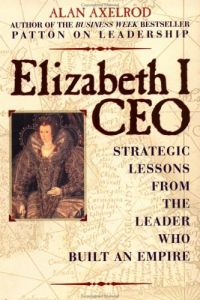Join getAbstract to access the summary!

Join getAbstract to access the summary!
Alan Axelrod
Elizabeth I CEO
Strategic Lessons from the Leader Who Built an Empire
FT Prentice Hall, 2000
What's inside?
Queen Elizabeth I ruled with deliberate strategy, confident power and consummate skill. Would you do as well as a monarch?
Recommendation
You may have regarded Queen Elizabeth I of England in many ways – as a ruler, as a dramatic historical figure, as the prototype of a powerful woman – but have you ever thought of her as a corporate manager? Alan Axelrod has. He explains how the Virgin Queen exemplified principles of good business leadership during her reign from 1558 to 1603. He shows how these ideals helped her survive to become queen and how she used them to transform England from a tumultuous country to a powerful empire. Lessons from her rule can show any CEO a few things about leadership in perilous times. The book’s combination of management principles with the drama of Elizabethan history makes for compelling reading. One critical note: the book skips around historically, which muddies the sequence of events. Otherwise, getAbstract recommends this excellent mix of enjoyable historical reading with powerful reminders about the fundamental principles of effective leadership.
Summary
About the Author
Alan Axelrod is the author of the bestseller Patton on Leadership and has written many books on management, business and career development, as well as works of military history and historical biography.


























Comment on this summary